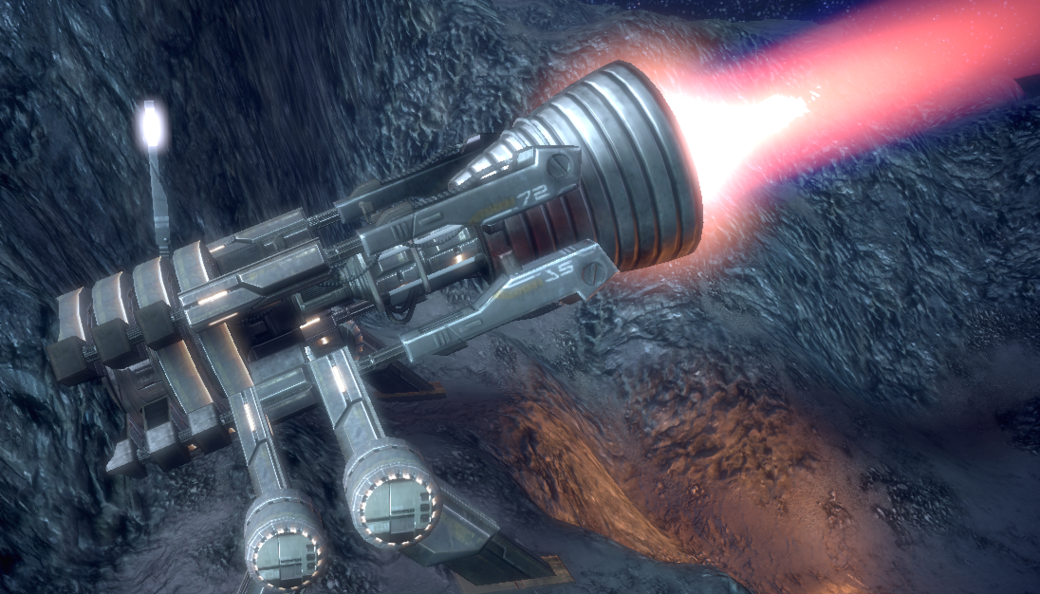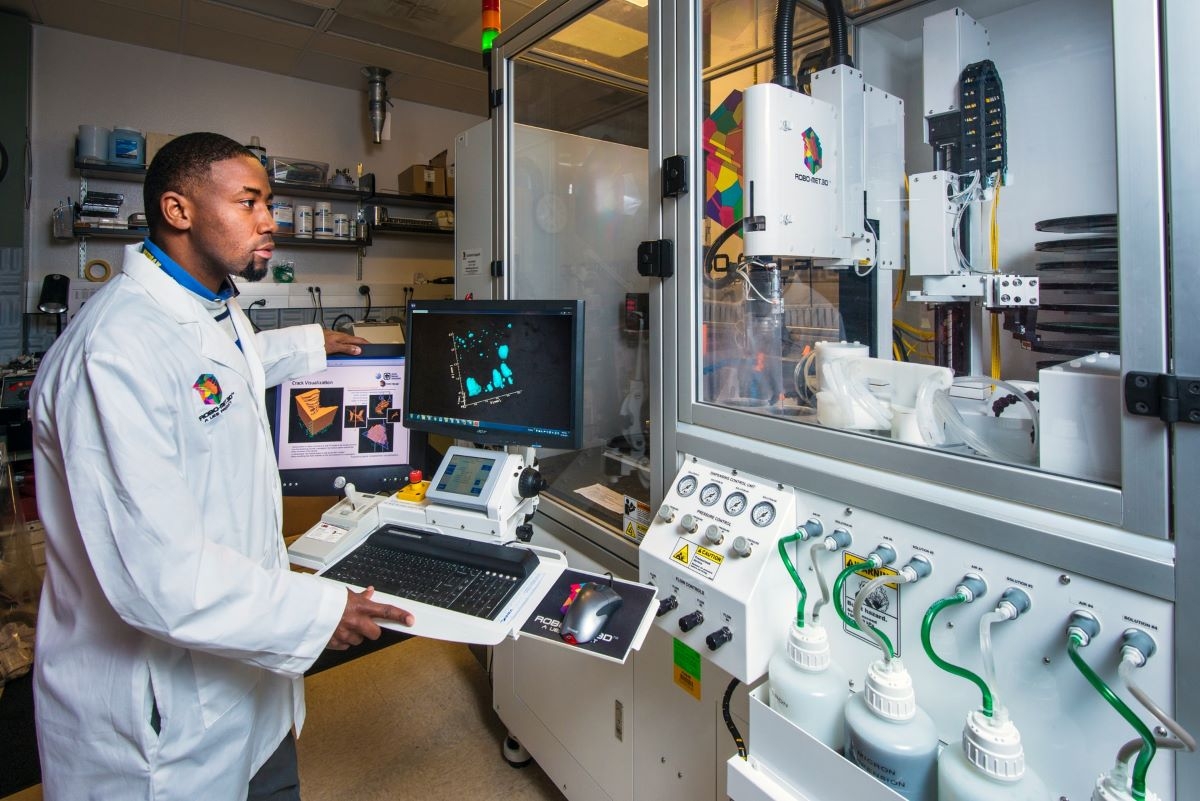
Putting the “Science” in “Science Fiction” – Railguns
The railgun is a weapon commonly shown or described in science fiction, and works by using an electromagnetic force to launch a projectile down a pair of conductive rails, rather than relying on gunpowder. Although films, like the Arnold Schwarzenegger film Eraser, and novels often refer to all projectile weapons that use electromagnetics as railguns, railguns are just one member of a group of weapons that use these forces.
Research is being conducted into creating this type of weapon because launching a projectile with magnetic forces has many advantages over using an explosion, as gunpowder weapons do. Electromagnetic weapons do not use gunpowder to launch their projectile, and because of this no shell casing is needed. The lack of a shell casing, which takes up far more space than the bullet it surrounds, means that a great deal more ammunition can be stored in a smaller space. The lack of shell casings also means it requires less material and expense to make rounds for railguns and similar weapons, and the ejection ports can be eliminated in order to keep the interior of the weapon cleaner.
Railguns and their cousins also have the potential to reach much higher muzzle velocities than conventional gunpowder firearms. This means they are more accurate to a larger range. The massively increased speed also means there is no reason to use explosive rounds, as the sheer impact force of a solid metal railgun round would cause as much or more damage than a conventional explosive one. With no gunpowder and no explosive in the round an electromagnetic weapon is much safer to operate or mount as a vehicle, as there is no risk of an ammunition explosion through misfire or enemy attack. Researchers have devised three main types of electromagnetic weapons: railguns, gauss weapons and pulse weapons.

Railguns are the most commonly discussed of electromagnetic accelerators, and work by launching a metal projectile along a pair of electrically charged rails. Each rail carries an electrical current, and as the projectile is loaded into the barrel it touches both and closes an electrical circuit. The electrical current runs up one rail, through the projectile, and down the other rail. This current creates an electromagnetic effect that accelerates the projectile down the barrel at blistering speeds. The combination of the projectile’s high speed, the heat this creates, and the electromagnetic field created by the weapon can actually create a plume of plasma behind the projectile. Some railguns actually use this plasma to help accelerate the projectile further.
Other railgun designs call for additional sets of conductors to channel the electricity and strengthen the magnetic field. Although railguns have many advantages, they also have several flaws, which limits their viability as a battlefield weapon. Like many technologies shown in science fiction, railguns require a large amount of power. The amount of energy required is very difficult to produce in a portable form with current technology, which would be required to bring railguns to the battlefield. Railguns are also very large pieces of technology, and advances will have to be made to make them easily portable. Another problem is that the high temperatures and projectile wear can cause the rails within the weapon to warp, requiring them to be replaced regularly to prevent the weapon from breaking and possible misfiring. Despite these problems railgun research continues. The U.S. Navy created a prototype, which is currently undergoing testing. It is planned to see another five years of improvements before being mounted on combat ships in 2017. While the railgun is being improved the navy also plans to work on mounting large battery and capacitor banks on their ships, and improving the technology behind them, in order to power the new weapon.
Another type of electromagnetic weapon is the gauss weapon, often known as a coil gun. These weapons use the same general principles as railguns, but work in a slightly different way. In a gauss weapon the conductive rails are replaced by electromagnetic coils which the projectile passes between but does not touch. The projectile passes through these coils, which are turned on and off in sequence. The first coil is turned when the weapon is fired, then turned off abruptly as the bullet reaches it while the next coil in line turns on. This system pulls the bullet down the barrel, the opposite of gas from an explosion pushing it out, and then when the last coil is turned off it continues on its path out the barrel of the gun.

In the future it may be possible to create a system where the electromagnetic fields switch polarity after the projectile passes through the coil, pushing and pulling it at the same time. Gauss weapons can have their range and power increased by increasing the number of coils, but this also adds to the complexity, size, and weight of the gun. Gauss weapons require more sophisticated controls than railguns in order to coordinate the magnetic fields, but would use less power as the magnetic coils require less charge than the rails in a railgun. Although gauss weapons do have promise they work only through magnetics, and so a large number of coils are required in order to reach battlefield velocities. This means that gauss weapons can be built smaller than railguns, but in order to cause a great deal of damage would have to be bigger. Research on weaponizing gauss technology continues however, and coilguns are a favourite of hobbyists who enjoy the exciting though dangerous prospect of building a small one themselves. These attempts have grown increasingly sophisticated over the years, and finding videos of homemade coil guns in action is not difficult. Although easily made these devices are very dangerous, due to risks of being electrocuted, as well as hit by a projectile. The U.S. military is focused on railgun research right now, but will likely branch into gauss weapons as electromagnetic weapons become more feasible.
Besides the commonly known rail and gauss weapons there was a third type of electromagnetic accelerator that the United States military experimented with. Although there is very little information the weapon used what was called pulse theory, and used two opposing magnets. Although details are scarce it seems one was secured to the rear of the barrel while the other had a hole in it and was placed at the front. Instead of using traditional metal bullets the pulse weapon would have fired magnets, achieving similar projectile speed as a gauss gun but with less range. Although this project did have some progress it seems to have been scrapped, and very little is known about it.
The primary focus of modern research on electromagnetic acceleration is military, but there are many other possible uses, including faster magnetic trains, launching vehicles or supplies into space, and even using railguns to fire plasma together in the hopes of starting a fusion reaction.









